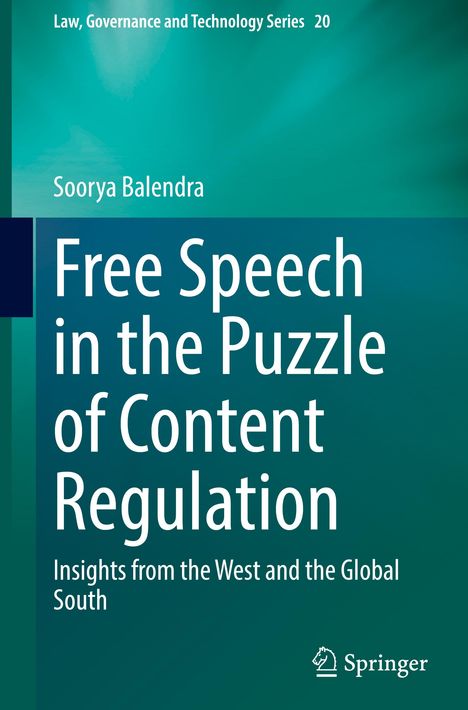Soorya Balendra: Free Speech in the Puzzle of Content Regulation, Gebunden
Free Speech in the Puzzle of Content Regulation
- Insights from the West and the Global South
(soweit verfügbar beim Lieferanten)
- Verlag:
- Springer Nature Switzerland, 11/2024
- Einband:
- Gebunden, HC runder Rücken kaschiert
- Sprache:
- Englisch
- ISBN-13:
- 9783031758126
- Artikelnummer:
- 12118767
- Umfang:
- 236 Seiten
- Gewicht:
- 516 g
- Maße:
- 241 x 160 mm
- Stärke:
- 19 mm
- Erscheinungstermin:
- 24.11.2024
- Hinweis
-
Achtung: Artikel ist nicht in deutscher Sprache!
Klappentext
This book explores the intersection of law and technology, focusing on online speech regulations and their complex interplay with free speech in the digital age. It identifies three primary regulatory models ¿ self-regulation, external regulation, and co-regulation ¿ and examines how each model presents recurring challenges in both content moderation and the protection of free speech. The study delves into the regulation of harmful speech, including defamation, violence, misinformation, and propaganda, highlighting the tensions between regulating prohibited content and preserving free speech online.
Additionally, the book addresses digital authoritarianism and its manifestation in regulatory approaches, particularly the Chinese model of content regulation. It also scrutinizes platform-driven regulation, assessing the challenges posed by both human and AI-driven content moderation.
Through a comparative analysis of legal frameworks across key jurisdictions ¿ including the United States (Section 230 of the Communications Decency Act), Germany (the Network Enforcement Act), India (the Information Technology (Intermediary Guidelines and Digital Media Ethics Code) Rules, 2021), and Sri Lanka (the Online Safety Act, 2024) ¿ the book examines how these frameworks navigate the balance between free speech rights and platform responsibilities, in these jurisdictions with the distinct context, power asymmetry of authorities with the platforms, political and cultural landscape, and social media market. It further explores how these evolving models reflect significant differences in the roles of governments, platforms, regulatory authorities, standards, and compliance mechanisms.
By engaging in a scholarly discussion on these issues from a legal and regulatory perspective, this book seeks to strike a balance between online free speech and legitimate restrictions. It provides a comparative lens on Western jurisprudence and the Majority World, linking common themes across jurisdictions to shed light on the intricate challenges of regulating online speech. In doing so, the book addresses a gap in the existing literature, offering a much-needed foundation for developing and updating both internal and external regulatory frameworks.

